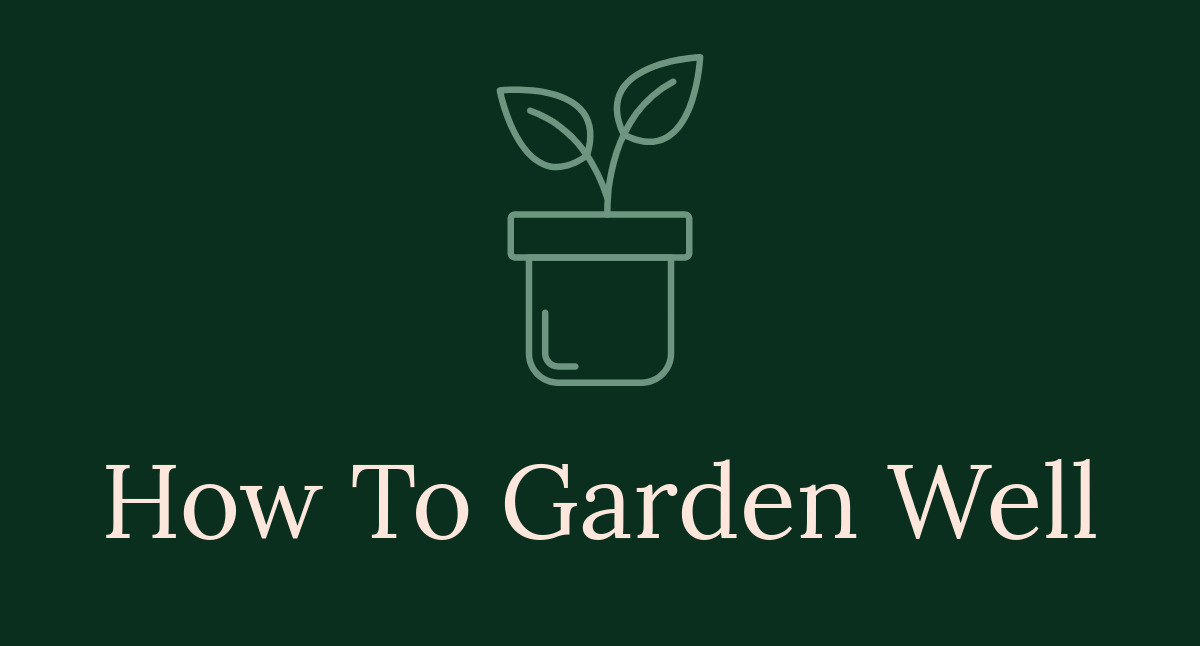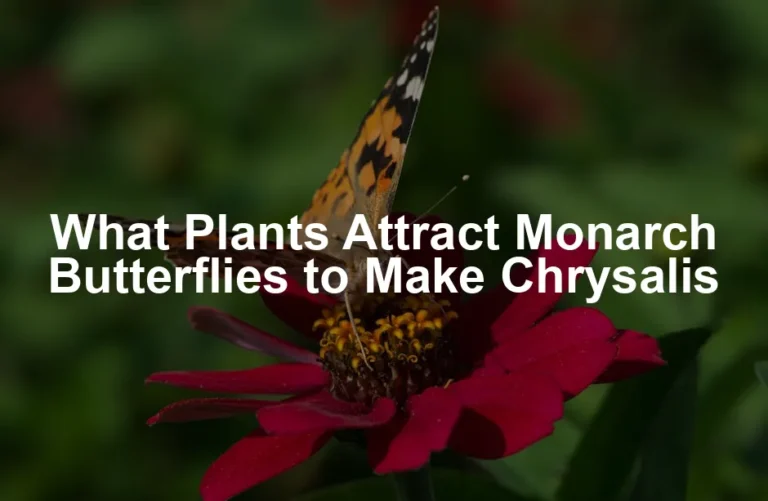
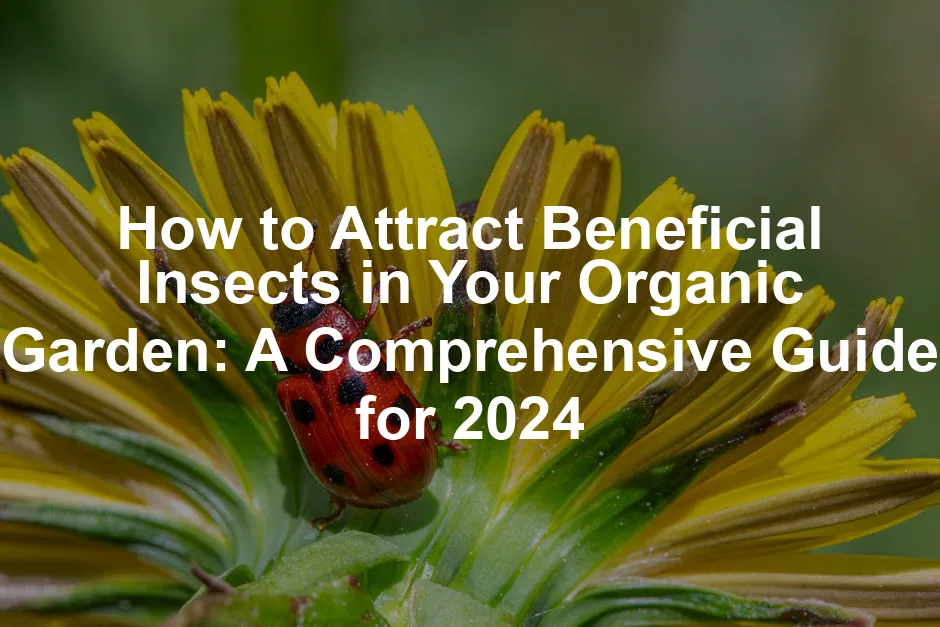
How to Attract Beneficial Insects in Your Organic Garden: A Comprehensive Guide for 2024
Introduction
In the world of gardening, the term “bugs” often evokes thoughts of pests wreaking havoc on your beloved plants. But what if I told you that not all bugs are bad? In fact, the right kind of insects can turn your garden into a flourishing ecosystem, doing everything from pest control to pollination. This guide will explore how to roll out the red carpet for beneficial insects in your organic garden, transforming it into a haven for these tiny allies. Buckle up, because it’s time to turn your garden from a battleground into a thriving, buzzing paradise!
Imagine your garden buzzing with life, where ladybugs dutifully munch on aphids and bees dance from flower to flower. It’s a dream scenario for any gardener, and it can be your reality. By attracting beneficial insects, you can create a sustainable environment that reduces the need for chemical interventions. You’ll enjoy a vibrant garden that thrives naturally. So, let’s dive into the enchanting world of beneficial insects and discover how to invite them into your organic oasis!

Summary of Key Points
In this extensive guide, we’ll explore the fascinating world of beneficial insects, exploring their vital roles in maintaining a healthy garden ecosystem. From natural pest control to pollination, these insects are essential allies for any organic gardener. You’ll learn about the top beneficial insects to attract, how to create a welcoming environment, and the best plants to include in your garden.
We’ll also discuss harmful practices to avoid, such as pesticide use, and offer practical strategies like building insect hotels and employing companion planting techniques. By the end of this guide, you will have the knowledge and tools needed to attract these tiny garden helpers and create a balanced ecosystem that thrives.
From ladybugs to lacewings, each beneficial insect has a unique role in your garden. Natural pest control, efficient pollination, and improved soil health are just a few benefits. Furthermore, fostering biodiversity enhances your garden’s resilience. This guide promises to equip you with insights that will make your garden a sanctuary for beneficial insects, ensuring a flourishing and sustainable gardening experience. Get ready to roll out the welcome mat for nature’s little helpers!

Understanding Beneficial Insects
What Are Beneficial Insects?
Beneficial insects are the unsung heroes of the garden world. They help your garden thrive rather than destroy it. Think of them as nature’s pest control, pollination service, and clean-up crew all rolled into one!
Insects can be categorized into three main roles: pollinators, predators, and decomposers. Pollinators, like bees and butterflies, help plants reproduce by transferring pollen. Predators, such as ladybugs and lacewings, keep harmful pests in check. Decomposers, like certain beetles and ants, break down organic matter, enriching the soil.
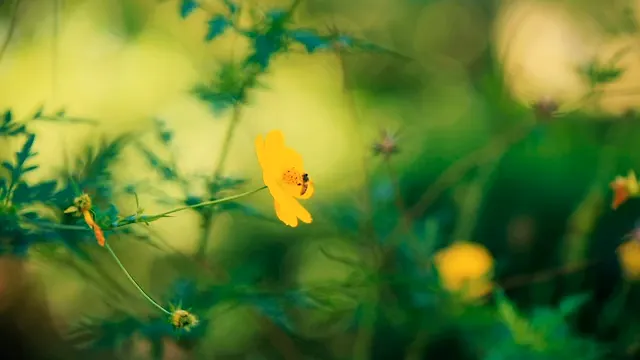
Why Are They Important for Your Garden?
Natural Pest Control: Beneficial insects keep the bad bugs in check. For instance, ladybugs can consume thousands of aphids in their lifetime.
Pollination: Many beneficials are excellent pollinators, helping your plants reproduce. Without them, our food supply would dwindle.
Soil Health: Some beneficial insects improve soil quality by breaking down organic matter, enriching it for your plants.
Biodiversity: They contribute to a balanced ecosystem by promoting a variety of plant and insect life.
Cost-effectiveness: These little helpers work for free! They minimize the need for expensive pesticides, saving you money and time.
By understanding the roles of beneficial insects, you can create a thriving garden that flourishes naturally. Invite these tiny allies into your space, and watch your garden transform into a vibrant ecosystem!
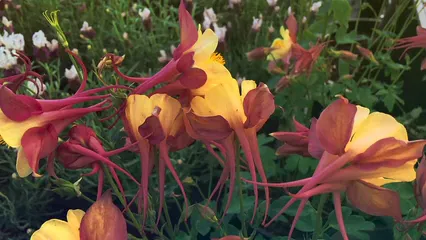
Top Beneficial Insects for Your Garden
Meet the All-Stars
Ladybugs
Ladybugs are the tiny, adorable superheroes of the garden. With their bright red shells and black spots, they might look cute, but they mean business. These little beetles have a voracious appetite for aphids. In their lifetime, a single ladybug can devour up to 5,000 aphids! Imagine your aphid problem disappearing faster than your favorite snack at a party. Not only do ladybugs munch on aphids, but they also tackle other soft-bodied pests, giving your plants a fighting chance.
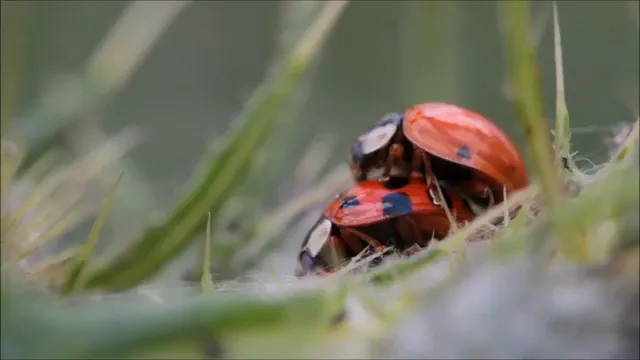
To ensure ladybugs stick around, consider investing in a Ladybug Habitat Kit. This kit provides the perfect environment for ladybugs to thrive, ensuring they become your garden’s best friends!
Bees
Now, let’s talk about bees—the buzzing champions of pollination. These hardworking insects are essential for fruit and vegetable production. Without bees, our food supply would take a nosedive. They flit from flower to flower, transferring pollen and ensuring plants can reproduce. Plant flowers like sunflowers, zinnias, and lavender to keep these pollinators happy. And remember, the more flowers, the more bees!
Creating a pollinator garden is essential for supporting bees and butterflies. creating a pollinator garden for bees and butterflies

Lacewings
Lacewings, especially their larvae, are like tiny assassins in the garden. Known as “aphid lions,” lacewing larvae can gobble up to 200 aphids a week! They also prey on other nasty pests like spider mites and thrips. By attracting lacewings, you create a natural pest control squad. Just plant some dill or fennel, and watch them swarm in to do their job.
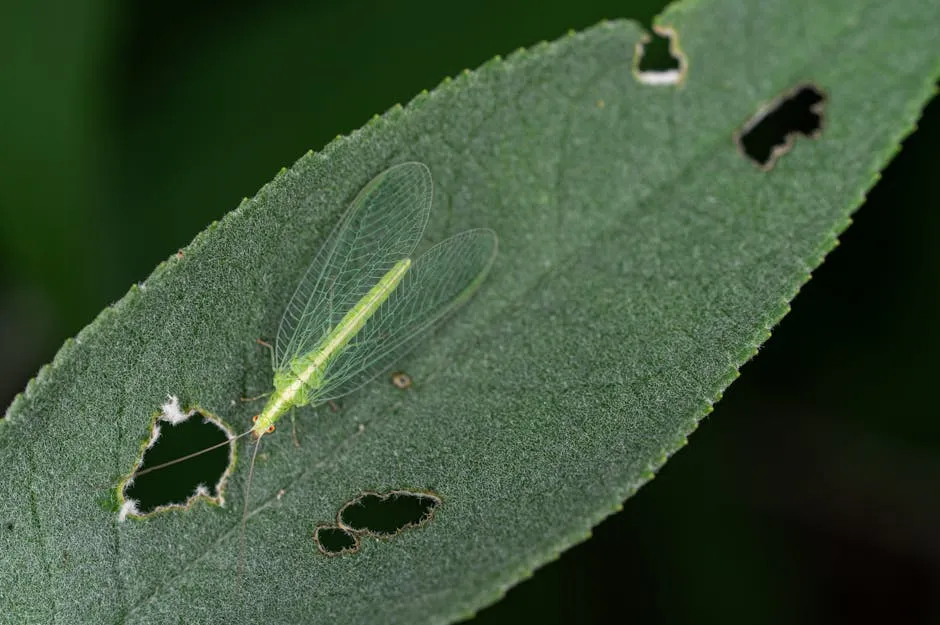
Praying Mantises
Next up, we have the praying mantis, the garden’s very own ninja. These fascinating insects boast an impressive diet—anything from flies to caterpillars. They’re like the all-you-can-eat buffet of the insect world! While they’re great at controlling pest populations, mantises can also munch on beneficial insects, so keep an eye on their numbers. Planting a variety of flowers can help balance their presence.
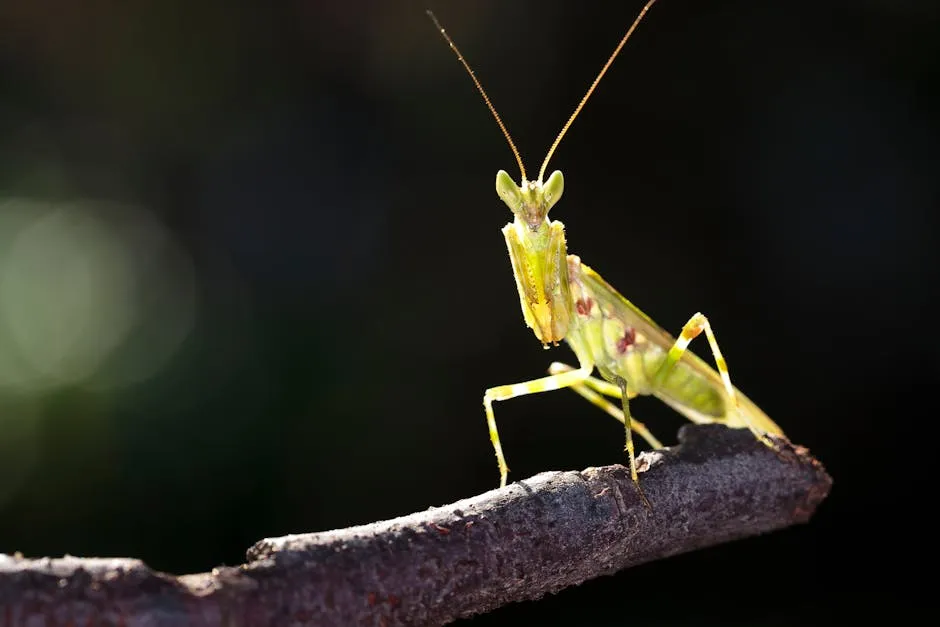
Hoverflies
Lastly, let’s give a warm welcome to hoverflies. These tiny creatures, resembling bees, are fantastic pollinators. But wait, there’s more! Their larvae are also effective aphid hunters. This dual role makes hoverflies an essential part of your garden ecosystem. To attract them, plant sweet alyssum, dill, or fennel. With hoverflies around, you’ll have help pollinating your plants and keeping pesky aphids at bay.
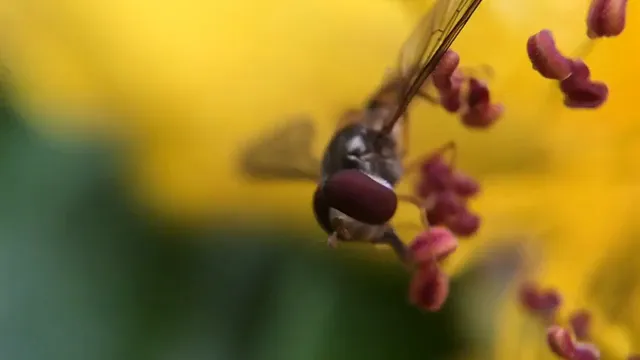
Creating a Welcoming Environment
Diverse Plant Selection
Creating a garden that attracts beneficial insects begins with diverse plant selection. Believe it or not, variety is key! Different insects are drawn to different plants, so mixing things up is essential. Flowering plants like marigolds, sunflowers, and cosmos not only add color but also provide nectar and pollen. On the herb side, think about planting dill, fennel, and mint. These herbs are not only useful in the kitchen but also serve as bug magnets. Native plants are a bonus, as they’ll attract local beneficial insects that are well-adapted to your area.
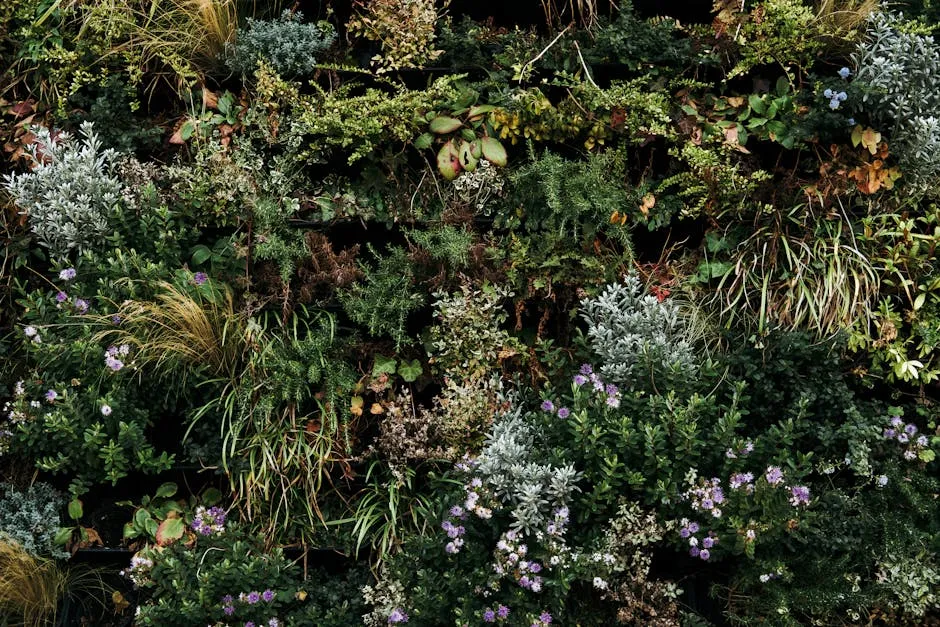
Using the right plants can greatly enhance your garden’s ecosystem. Best plants for creating a low-maintenance backyard garden
Water Sources
Just like us, beneficial insects need water to survive. Providing a simple water source can make your garden a hot spot for these tiny allies. Consider placing shallow dishes filled with pebbles or a small fountain. This will create a safe landing pad for insects to sip without the risk of drowning. Remember to change the water regularly to keep it fresh and inviting. A shallow bird bath can be a charming addition to your garden while providing hydration for beneficial insects!

Shelter and Overwintering Sites
Last but not least, don’t forget about shelter! Beneficial insects need places to hide and overwinter. Leaving some undisturbed areas in your garden is crucial. Piles of leaves, logs, or even small brush piles can become cozy homes for these insects. By creating a welcoming habitat, you’ll ensure your insect allies have a safe space to thrive. So, let your garden be a refuge, and watch as beneficial insects flock to their new digs!
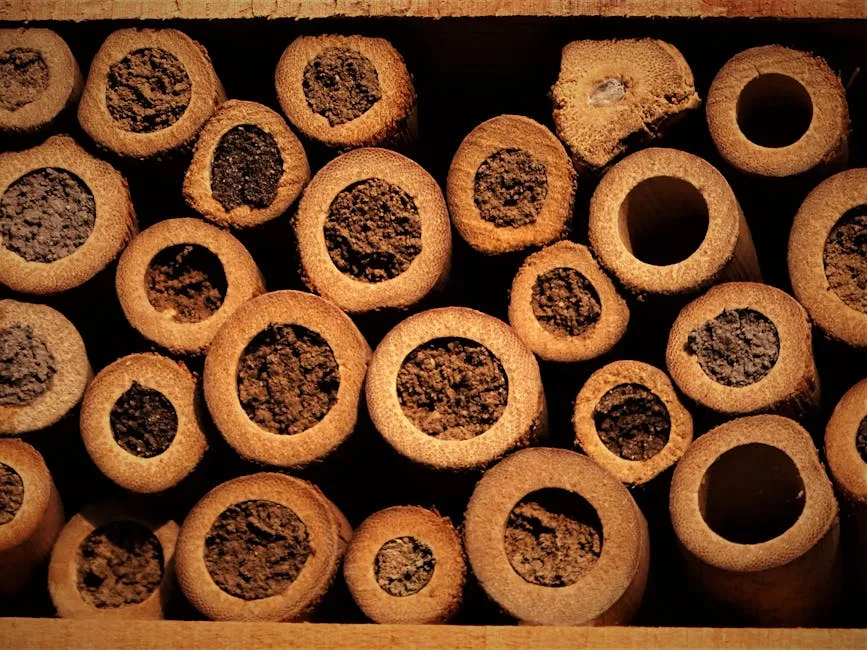
Best Plants to Attract Beneficial Insects
Flowering Plants
When it comes to attracting beneficial insects, flowering plants are your best friends. They serve as the buffet for these tiny allies. Specific flowers like marigolds, zinnias, and sunflowers are must-haves in your organic garden. Marigolds are notorious for luring in ladybugs, who would happily munch on aphids. Zinnias add a splash of color while attracting bees and butterflies. Sunflowers are not just pretty—they’re effective nectar sources for many pollinators.
Adding cosmos and lavender can also increase your insect appeal. These flowers bloom throughout the seasons, providing a continuous food source. The more variety you have, the better! So, plant these beauties in clusters for an inviting insect fiesta.
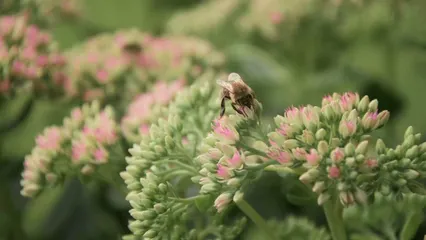
Herbs
Herbs are a two-for-one deal. Not only do they enhance your culinary adventures, but they also attract beneficial insects. Dill and fennel are particularly enticing for hoverflies and lacewings. These herbs produce tiny flowers that act like neon “Open” signs for beneficial insects. Basil, mint, and cilantro are also great options. They bring in pollinators while making your dishes pop!
Planting these herbs not only provides food but also ensures your kitchen has fresh ingredients. Plus, they attract beneficials when you’re busy cooking up a storm in your kitchen. Consider adding a mint plant seed for a refreshing touch in your culinary creations!
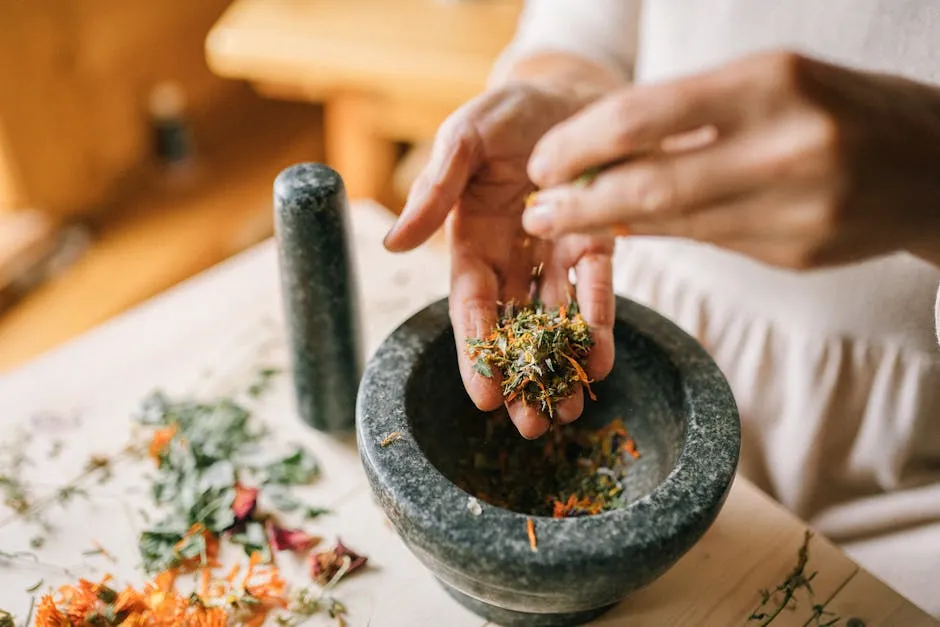
Native Plants
Planting native species is like throwing a welcome party for local beneficial insects. These plants are adapted to your area, requiring less maintenance and water. They also support the specific insect populations that already call your region home. For instance, planting native wildflowers can attract butterflies and bees that are essential for pollination.
Plus, native plants are often more resilient to pests and diseases, meaning you’ll have less work in the long run. By incorporating native varieties, you create a self-sustaining ecosystem that benefits everyone—plants, insects, and you! If you’re looking for a variety, try native wildflower seeds to enhance your garden’s biodiversity!

Avoiding Harmful Practices
Pesticide Use
If you want to attract beneficial insects, ditch the pesticides! These chemicals are like a bad date—killing the good bugs along with the bad. Pesticides disrupt the delicate balance of your garden, leading to pest outbreaks. Instead of reaching for that spray can, consider natural alternatives like organic neem oil or insecticidal soap. They target pests without harming your insect allies.
It’s crucial to understand that beneficial insects are your garden’s frontline defense. They help control pests naturally, reducing your reliance on chemicals. So, keep your garden’s ecosystem thriving by keeping those harmful sprays at bay!
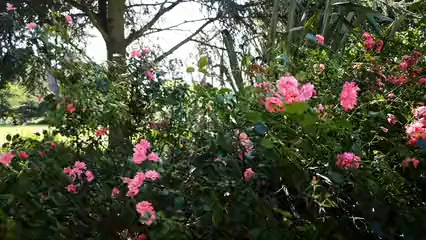
Over-Tidying
Over-tidying your garden can be detrimental. Leaving some organic matter, like fallen leaves or twigs, creates habitats for beneficial insects. Think of this organic litter as a cozy blanket for insects like ladybugs and spiders. They’ll use these spaces to hide from predators and lay eggs.
Instead of a pristine garden, embrace a slightly messy look. It’s not just charming; it’s practical! By allowing nature to take its course, you’ll create a thriving habitat for your insect allies. So, let that organic matter stay a little longer and watch your garden flourish!
Building Insect Hotels
Creating insect hotels is a fun way to provide shelter for beneficial insects. Start by gathering natural materials like bamboo, hollow stems, and pinecones. Arrange these materials in a wooden box or simply stack them in a corner of your garden. This makes a cozy retreat for ladybugs, lacewings, and even solitary bees.
To build your insect hotel, follow these steps:
- Choose a Location: Find a sunny, sheltered spot in your garden.
- Gather Materials: Collect twigs, straw, and hollow stems.
- Construct Layers: Fill boxes or piles with your materials in layers. Different insects prefer different spaces.
- Decorate: Add a few decorative touches, but keep it functional!
Insect hotels provide safe spaces for beneficial insects to thrive. These little havens encourage them to stick around, helping with pest control and pollination. So, roll up your sleeves, and start building—your garden will thank you! If you want to get creative, consider using an insect hotel building kit to make the process even easier!

Companion Planting Strategies
Companion planting is a savvy technique that involves pairing plants for mutual benefits. This can create a thriving environment that attracts beneficial insects while deterring pests. It’s like setting up a dinner party where everyone leaves happy!
One of the main benefits of companion planting is pest control. Certain plants can repel harmful insects. For example, planting basil near tomatoes can keep the dreaded tomato hornworm at bay while also attracting pollinators. Who wouldn’t want their tomatoes to flourish with a side of basil, right?
Another great pairing is carrots and onions. The strong scent of onions masks the fragrance of carrots, confusing pests like the carrot fly. Meanwhile, the carrots help aerate the soil, which keeps both plants smiling. It’s a win-win!
Marigolds are another superstar in the companion planting arena. When planted with vegetables, they repel nematodes and aphids. Plus, they add a pop of color to your garden. Talk about beauty and brains!
You can also consider planting dill and fennel together. These herbs attract ladybugs and lacewings, both of which feast on aphids. This pairing creates a natural pest control squad right in your backyard!
Finally, think about planting garlic with almost anything. Its pungent aroma wards off a variety of pests, while also being a delicious addition to your meals. In short, companion planting is a brilliant strategy to create a flourishing organic garden while inviting beneficial insects to join your green fiesta!
For more on how to maximize your garden yield, check out these Companion planting strategies for increased yield.
Maintaining Year-Round Appeal
Keeping your garden attractive to beneficial insects throughout the year requires some planning and creativity. Start by including a variety of plants that bloom at different times. This ensures a continuous food source for our tiny allies. Early bloomers like crocuses and snowdrops can warm up the welcome mat in spring, while asters and goldenrod can keep the party going into fall.
Don’t forget about evergreens! These sturdy friends provide structure and shelter during the winter months. Leaving seed heads on flowers also attracts birds while providing essential food for beneficial insects. It’s like a buffet that never closes!
Creating microhabitats is another clever tactic. Piles of leaves, twigs, or stones can serve as cozy winter hideaways for insects. Consider building insect hotels too. These unique structures can provide shelter for various beneficial insects during colder months. Plus, they’ll add an interesting focal point to your garden!
Lastly, maintain a pesticide-free environment. Chemicals can deter beneficial insects, turning your haven into a ghost town. By keeping your garden natural and welcoming, you’ll ensure that beneficial insects feel right at home all year long.
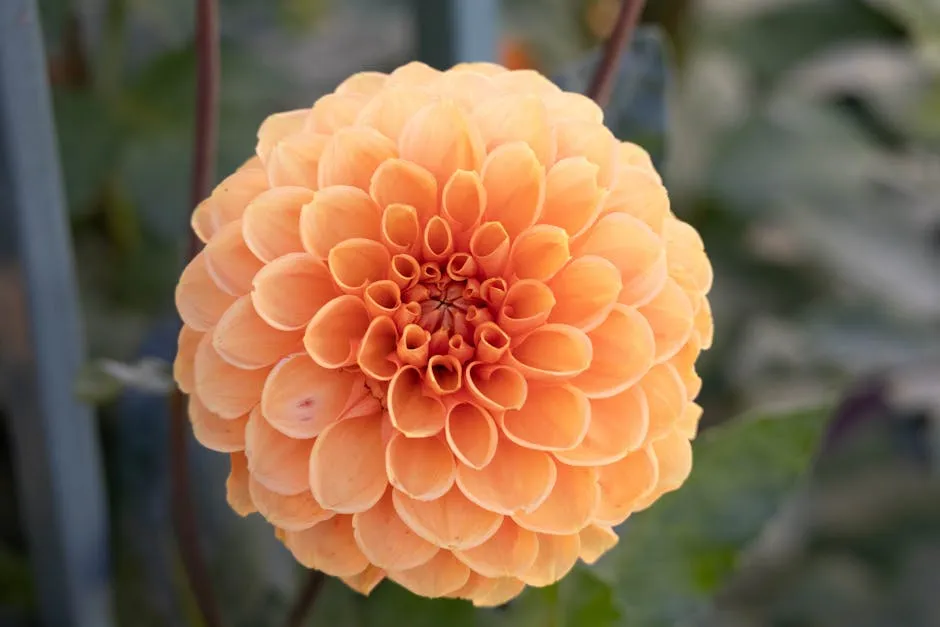
Balancing Beneficial and Pest Insects
Finding balance in your garden is essential for a healthy ecosystem. While it’s tempting to eliminate every pest, some are actually necessary for maintaining this harmony. A few pesky aphids can attract ladybugs, which will help keep pest populations in check. Think of it as inviting the right friends to manage the party!
The predator-prey relationship is a key aspect of this balance. Beneficial insects rely on pests for food. Without a few pests, beneficial insects may leave in search of a buffet elsewhere. So, embrace a few pests as they can serve as an essential food source for your beneficial allies.
Additionally, certain pests can contribute to soil health by breaking down organic matter. When they die, they enrich the soil, creating a better environment for your plants. It’s all about creating a diverse garden that supports various life forms.
Remember, the goal isn’t to eliminate all pests but to maintain a balanced ecosystem. By understanding the roles of both beneficial and pest insects, you’ll create a dynamic garden that flourishes naturally. So, let your garden be a bustling hub of life, where beneficial insects thrive alongside a few pesky pals!

Conclusion
Creating an organic garden that attracts beneficial insects is not just about eliminating pests; it’s about fostering a balanced ecosystem. By understanding the roles of these little allies and providing the right environment, you’ll cultivate a thriving garden that requires less intervention and yields greater rewards. Imagine strolling through a garden alive with the buzz of bees and the flutter of ladybugs. It’s not a fantasy—it’s your new reality.
As you embrace the beauty of nature, remember that beneficial insects are your partners in gardening. They help control pests, pollinate flowers, and improve soil health. The more diverse your garden, the more attractive it becomes to these helpful critters. So, plant a mix of flowering plants, herbs, and native species. Provide water sources and shelter. With these simple steps, you’ll create a sanctuary for beneficial insects.
Let these tiny helpers work their magic in your garden! Over time, you’ll notice less need for chemical interventions and more flourishing plants. You’re not just growing food; you’re cultivating a vibrant ecosystem. So, roll out the welcome mat for beneficial insects, and watch your garden transform into a haven of life and productivity!
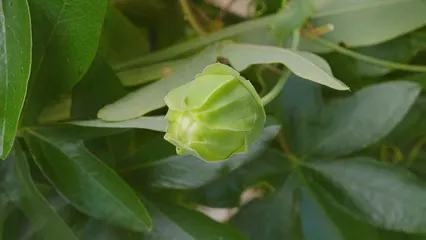
FAQs
How long does it take to attract beneficial insects to my garden?
Attracting beneficial insects isn’t an overnight magic trick; it takes time! Depending on various factors, you might notice results within a few weeks to a full growing season. Weather conditions, the types of plants, and existing insect populations all play a role. For example, if you plant a variety of flowering plants that bloom at different times, you’ll create a food source throughout the season. As they discover your garden, beneficial insects will start to arrive and settle in.
Can I buy beneficial insects to release in my garden?
Yes, you can buy beneficial insects, such as ladybugs or lacewings! However, weighing the pros and cons is essential. While purchasing insects can provide immediate relief from pests, it’s generally better to attract them naturally for long-term success. When you create a welcoming environment with diverse plants, you’ll encourage beneficial insects to thrive and reproduce. This way, you build a stable ecosystem instead of relying on one-time purchases.
Will attracting beneficial insects completely eliminate my pest problems?
Let’s get real: attracting beneficial insects won’t completely wipe out your pest problems. The goal is not total elimination but achieving balance. Some pests will always lurk around, but beneficial insects will significantly reduce their populations. Think of it as a team effort! Ladybugs munch on aphids, while bees help your plants bloom. By fostering this balance, your garden becomes a healthier, more resilient space.
Are there any beneficial insects I should avoid attracting?
Most beneficial insects are harmless, but there are a few you might want to keep at bay. For instance, certain wasps can be aggressive and sting if provoked. If you or someone in your family has severe allergies, it might be wise to exercise caution. Additionally, some predatory insects might feast on beneficial ones if their populations grow too high. Always observe your garden and make adjustments as necessary.
How can I tell the difference between beneficial insects and pests?
Identifying beneficial insects from pests can be tricky! Start by observing their behavior. Beneficials often thrive in areas with pests they feed on, such as aphids. Research is crucial—many gardening websites and books can help you learn more about insect identification. Consider joining local gardening groups or online forums where you can ask questions and share pictures. With practice, you’ll become an insect detective in no time!
Please let us know what you think about our content by leaving a comment down below!
Thank you for reading till here 🙂
All images from Pexels
